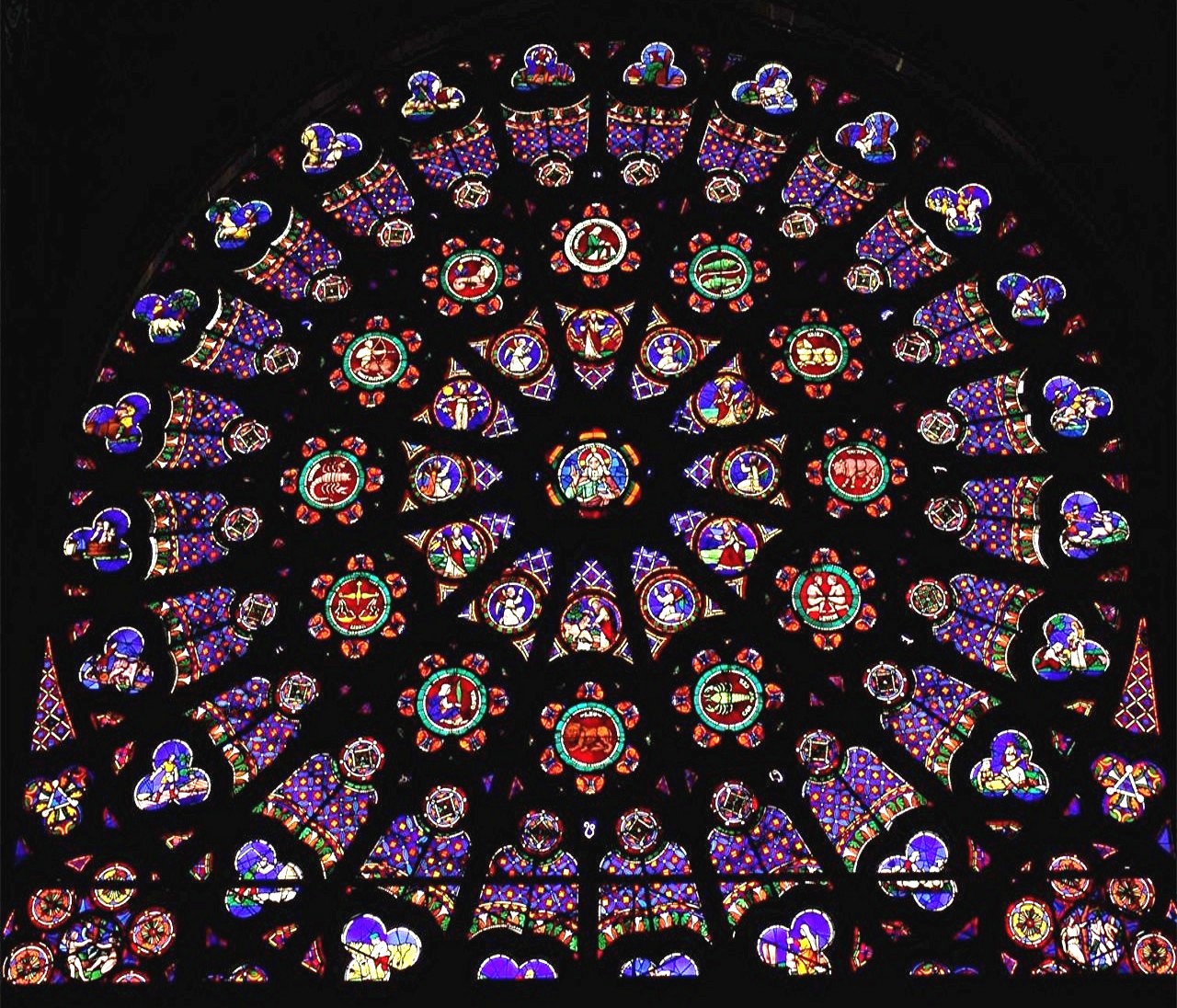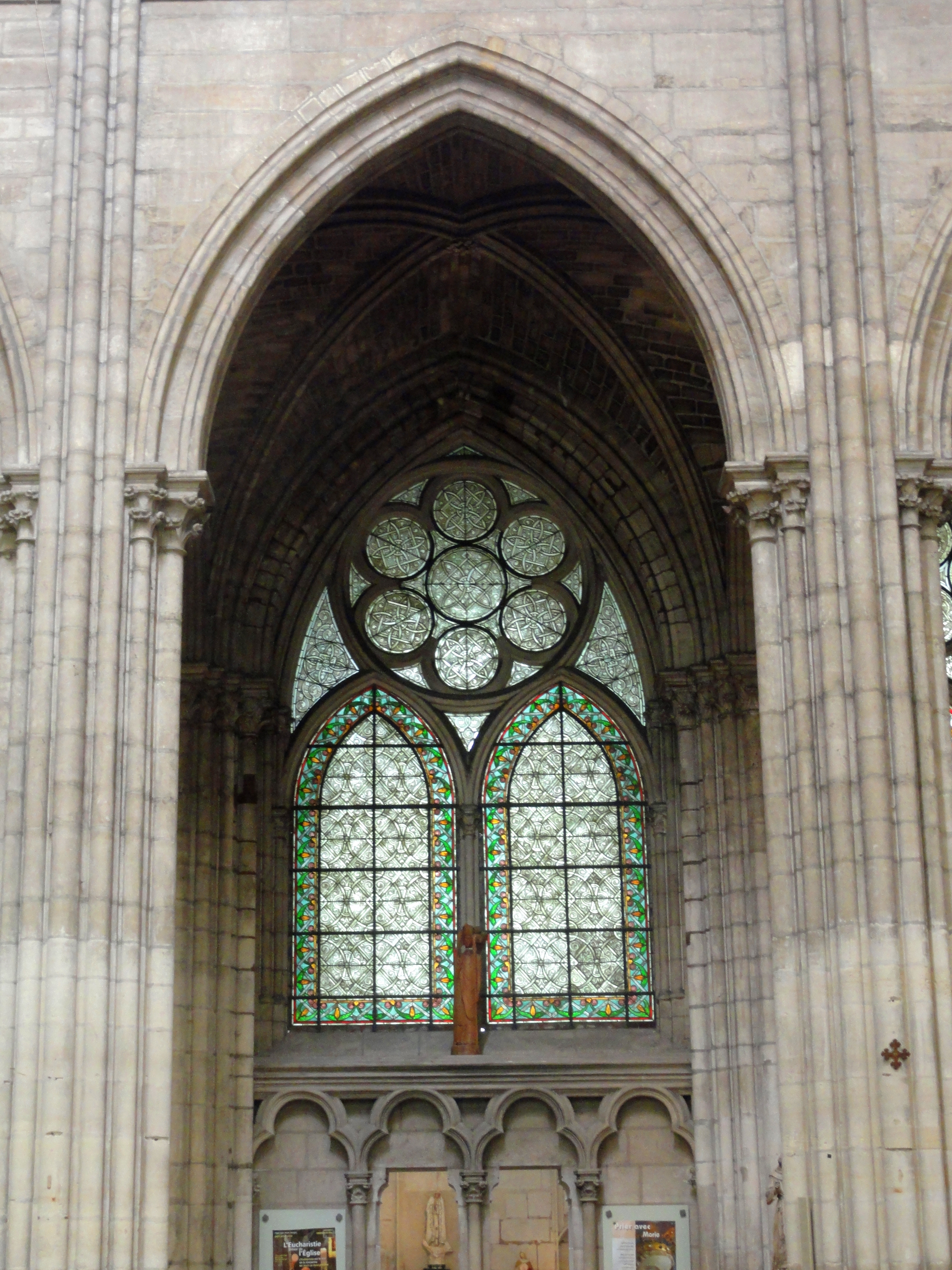Another interesting fact about this period is that during that time it was not called the "Gothic period" they just called it modern art. It was not until later that it picked up this name, which was first used during the Renaissance period. Those individuals who arrived at this name did so because they felt that the art and architecture of this time was nearly the exact opposite of what was created by the classical Roman style. "Gothic" actually came from the Goths, which were the people who had overrun the Roman empire. This made people of the Renaissance think that the Goths had brought this new design period with them when they conquered the Roman Empire, but they were actually incorrect.
The First Gothic Cathedral:
Somewhere between 1132-1144 A.D. a new cathedral was constructed near Paris, it was named "The Abbey of St. Denis". At that time the abbey was ruled by a great abbot named Suger, who was greatly interested in art of every kind. Suger wanted to make his church the finest and the most beautifully decorated in the Christian world. Although Abbot Suger was a monk dedicated to a life of holiness, he did not believe that God's house should look bare and poor. Suger was fond of people--from the king to the beggar--and wanted them all to come to the services at his church. He insisted on rebuilding the much older St. Denis Church, which was small and old-fashioned. Suger would not let any difficulty stand in his way. He arranged for the stone to be quarried--dug from the ground. He needed long wooden beams for the roof but was told such great timbers were not to be had; so he went out himself and searched in the forests until he found trees big enough to supply the beams he wanted. In the end he succeeded in getting the church built. It was dedicated in the presence of King Louis VII, on July 11, 1144.
 |
| St.Denis Cathedral near Paris |
 |
| Interior of St.Denis |
 |
| Stained glass telling stories of the Bible in St.Denis |
 |
| More intricate stained glass in St.Denis Cathedral |
 |
| The "Rose Window" in the St.Denis Cathedral |
The Cathedrals that were constructed during the Gothic period had a few defining features that viewers of such buildings will notice immediately. Those include the pointed arch, rib vault, and the flying buttress.
Pointed Arch Rib Vault


Flying Buttress

The flying buttress was incorporated as a system of hidden supports for the weight of the architecture. These allowed a more open feeling that meant more windows could be added to architecture so that more natural light could be used in the spaces. This was a major sense of importance during this time period because light was seen as pure and heavenly, almost as if heaven were reaching down and touching earth.
Current Applications:


Stained Glass is still an artform that is used by many artists today, whether they be professionals or just DYI crafters, it is something for people of many skill levels to do.




Extra Credit:
This is a link to the specific timeline of the Gothic period, including all major events and pieces of artwork. http://www.wga.hu/tours/gothic/timeline.html
Current Applications:


Stained Glass is still an artform that is used by many artists today, whether they be professionals or just DYI crafters, it is something for people of many skill levels to do.

 |
| A current day pool house with Gothic influences, i.e. the pointed arches above doorway |


Extra Credit:
This is a link to the specific timeline of the Gothic period, including all major events and pieces of artwork. http://www.wga.hu/tours/gothic/timeline.html
No comments:
Post a Comment